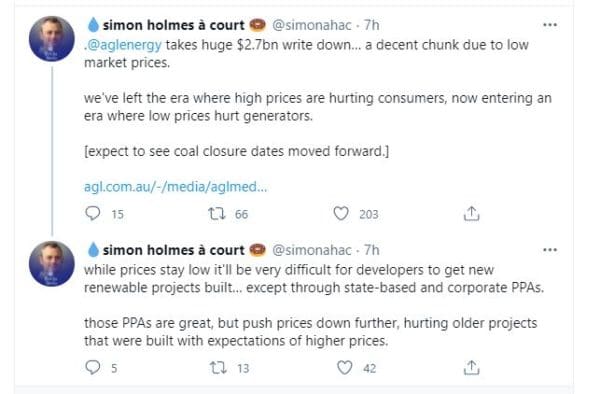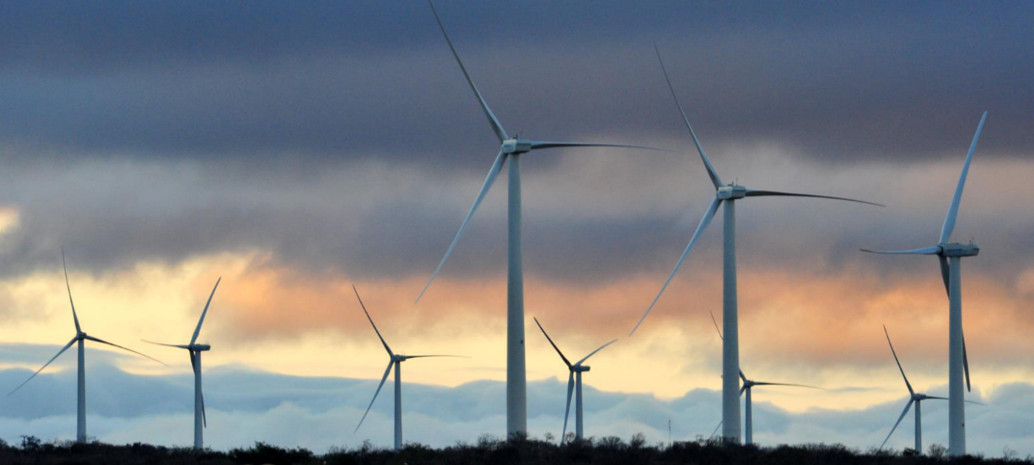AGL announced on Thursday it would write off $2.686 billion, including $1.92 billion in “onerous contracts” relating mostly to long-term wind farm offtake agreements.
The massive write-down in the company’s financial statements for the period ended December 31, 2020 also includes $1.112 billion relating to increases to environmental restoration provisions and another $532 million comes from impairments across AGL’s generation fleet and natural gas assets. The charges were offset marginally by a positive tax effect of $878 million.
AGL is not the only energy company to highlight the challenges the major utilities are confronting with Origin Energy revealing lower energy prices would likely deliver it significantly lower earnings.
In a statement released on Thursday, Origin indicated its electricity gross profit is expected to be down by up to $290 million year on year due to falling wholesale power prices, increased network costs and the impacts of mild summer conditions on demand and volatility.
Smart Energy Council board member Simon Holmes a Court took to Twitter in the wake of AGL’s announcement, declaring it a sign of transition in the industry.
“We’ve left the era where high prices are hurting consumers, now entering an era where low prices hurt generators,” he wrote.

AGL said the “onerous contracts” which have taken such a chunk out of its bottom line relate to long-term wind offtake agreements which the company signed between 2006 and 2012 to support the development of the renewables sector at that time.
“The offtake agreements were entered into when prices were significantly higher than spot and forecast prices for electricity and renewable energy certificates today,” AGL said in a statement.
AGL said the massive write-down follows an accelerated deterioration to long-term wholesale energy market forecasts in recent months, a point confirmed by energy market analyst Paul McArdle, who said average spot prices through 2020 were down at levels not seen for many years.
AGL CEO Brett Redman said while the long-term outlook is for a sustained and material reduction in prices, that would lead to expectations of increased supply.
“As Australia’s largest energy retailer and largest generator of electricity, we continue to see material opportunities for AGL to participate in the energy transition as customer needs, community expectations and technology evolve,” he said.
“Notwithstanding these charges, our broad and diverse portfolio of electricity generation assets will continue to have a vital role to play in enabling the transition of the energy system.”
Despite the massive write-down, AGL anticipates it will have an ”immaterial impact” on its underlying profit for FY21, which is unchanged from the range of $500 million to $580 million.
This content is protected by copyright and may not be reused. If you want to cooperate with us and would like to reuse some of our content, please contact: editors@pv-magazine.com.









2 comments
By submitting this form you agree to pv magazine using your data for the purposes of publishing your comment.
Your personal data will only be disclosed or otherwise transmitted to third parties for the purposes of spam filtering or if this is necessary for technical maintenance of the website. Any other transfer to third parties will not take place unless this is justified on the basis of applicable data protection regulations or if pv magazine is legally obliged to do so.
You may revoke this consent at any time with effect for the future, in which case your personal data will be deleted immediately. Otherwise, your data will be deleted if pv magazine has processed your request or the purpose of data storage is fulfilled.
Further information on data privacy can be found in our Data Protection Policy.